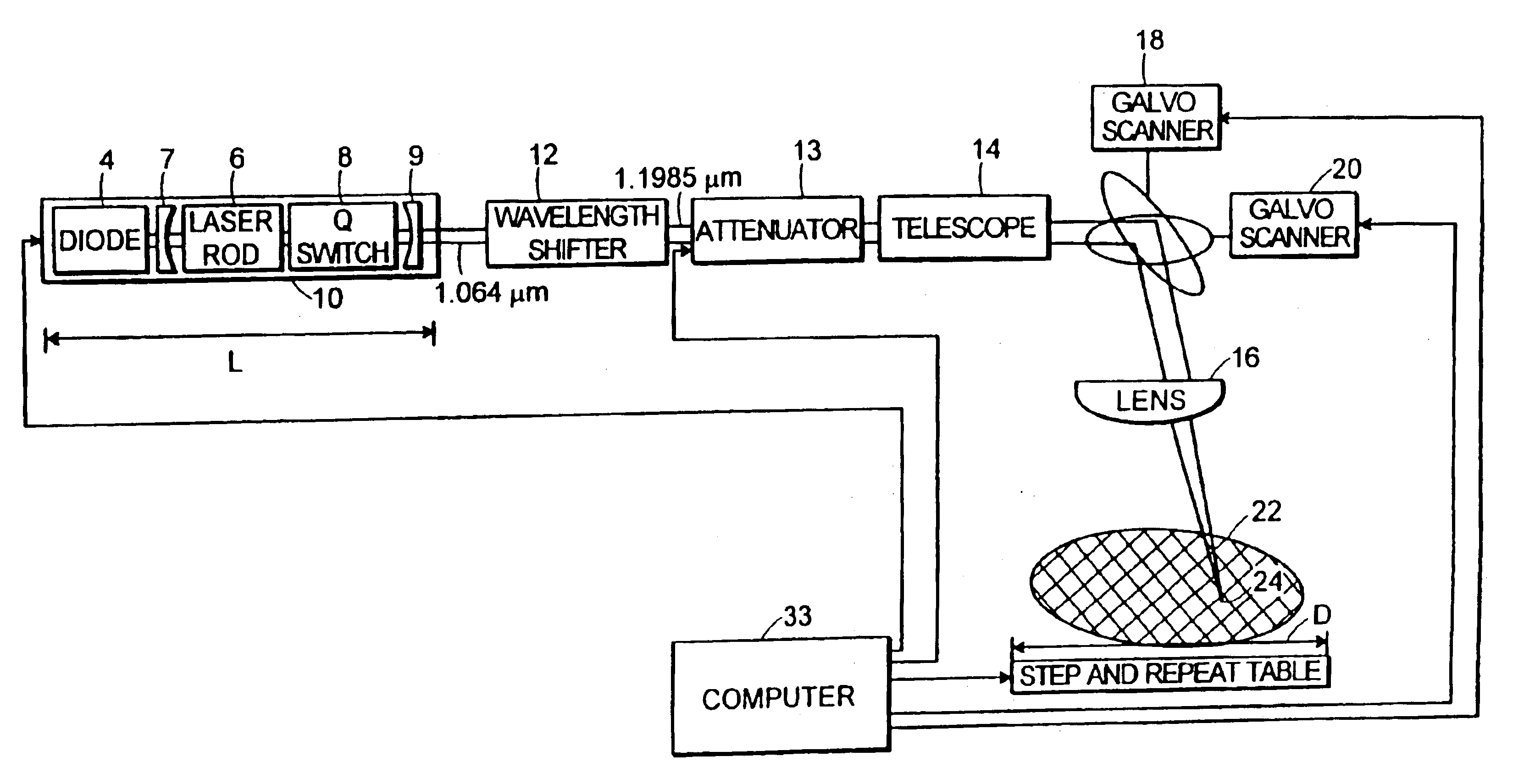Laser processing
a laser and laser pulse technology, applied in the field of laser processing, can solve the problems of limited silicon temperature rise, and achieve the effect of improving the overall result in the throughput of successful repair and high repetition rate of laser pulses
- Summary
- Abstract
- Description
- Claims
- Application Information
AI Technical Summary
Benefits of technology
Problems solved by technology
Method used
Image
Examples
Embodiment Construction
The techniques of the present invention provide quick and reliable removal of links in semiconductor memory devices. By increasing the probability of success of removing individual links, the invention increases the overall probability of successfully repairing a given semiconductor device having many links to be removed, thereby providing successful yields of repaired semiconductor devices.
This is especially important because as the number and density of memory cells in semiconductor devices has increased from 64-kilobit memories to 256-megabit memories, the physical size of the memories has become greater. Although clean rooms have improved, the defect density remains constant for each class of clean room. This means that the number of defects per semiconductor device increases with area. Hence, as the number of storage bits increases, the number of redundant rows and columns of memory also increases. For some 1-megabit memory designs the number of links to support redundant repai...
PUM
| Property | Measurement | Unit |
|---|---|---|
| wavelength | aaaaa | aaaaa |
| laser wavelength | aaaaa | aaaaa |
| laser wavelength | aaaaa | aaaaa |
Abstract
Description
Claims
Application Information
 Login to View More
Login to View More - R&D
- Intellectual Property
- Life Sciences
- Materials
- Tech Scout
- Unparalleled Data Quality
- Higher Quality Content
- 60% Fewer Hallucinations
Browse by: Latest US Patents, China's latest patents, Technical Efficacy Thesaurus, Application Domain, Technology Topic, Popular Technical Reports.
© 2025 PatSnap. All rights reserved.Legal|Privacy policy|Modern Slavery Act Transparency Statement|Sitemap|About US| Contact US: help@patsnap.com



